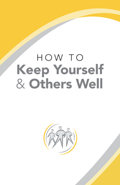Introduction
Bacteria and viruses can spread. When someone in your household is ill with a contagious disease, extra precautions need to be taken to prevent spreading the illness to other members of the household.
Knowing how bacteria and viruses can spread is the first step in preventing their transmission.
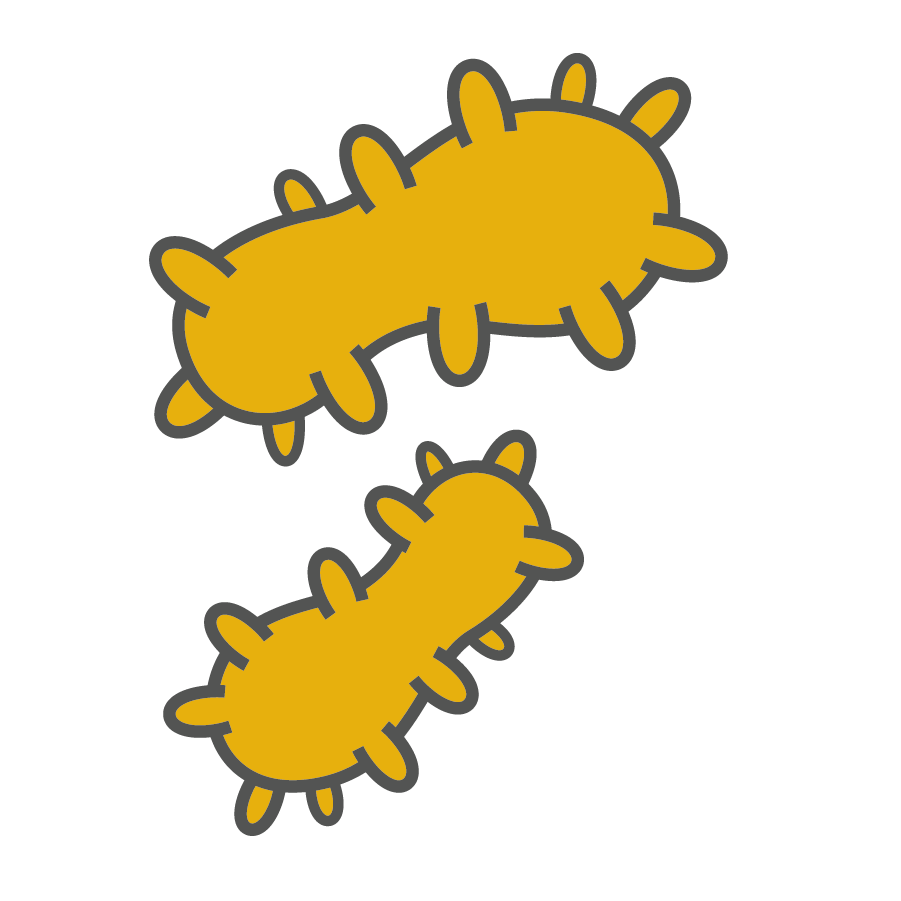
Bacteria are tiny single-celled organisms that can be seen only through a microscope. Bacteria get nutrients from their environment, which in some cases is you or some other living being or animal.
Both good and bad bacteria exist. Examples of good bacteria are those that aid the digestive system by keeping it in working order and preventing harmful bacteria from moving in.
Some bacteria are even used to make medicines and vaccines.
Harmful bacteria contribute to cavities, ear infections, strep throat and many other infections and illnesses.
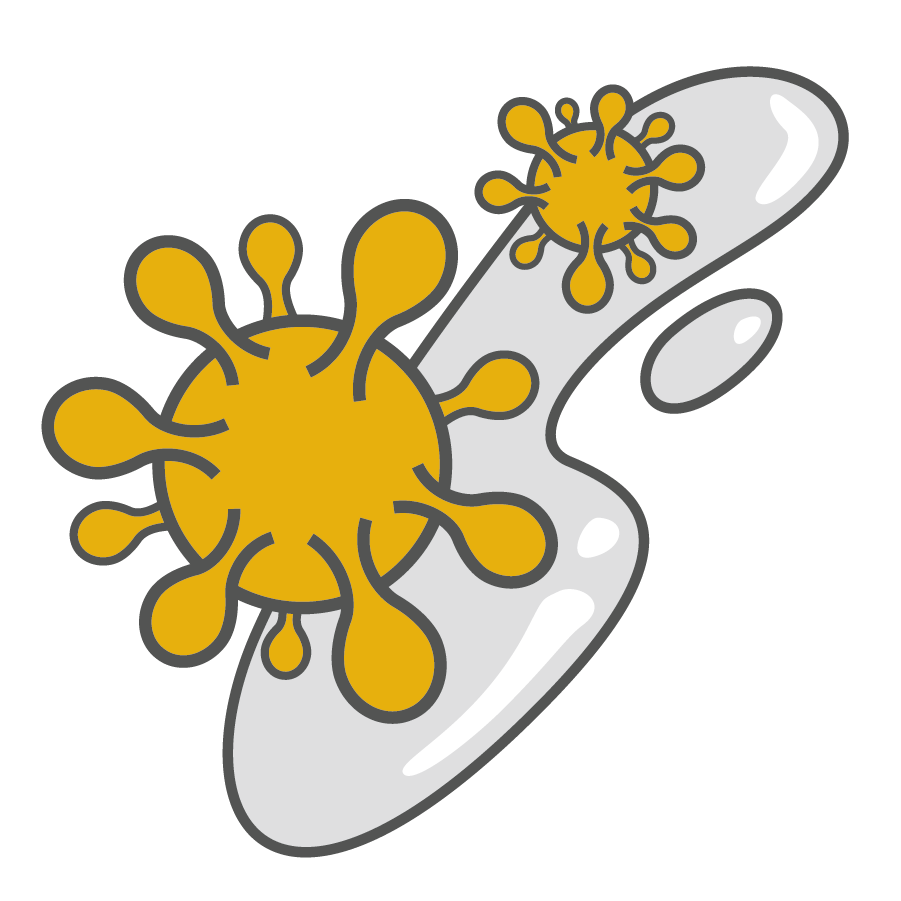
Viruses are very tiny organisms, even smaller than bacteria. Viruses reproduce and survive only when they are inside a living cell. Although their life spans outside living cells are generally short, some viruses can survive for several days on inanimate objects and materials.
If a living body is infected with a virus, the body’s fluids contain the virus. And when these fluids are left on surfaces, such as a doorknob or water faucet, the virus can remain alive on these surfaces for hours or days and be transmitted to another living body.
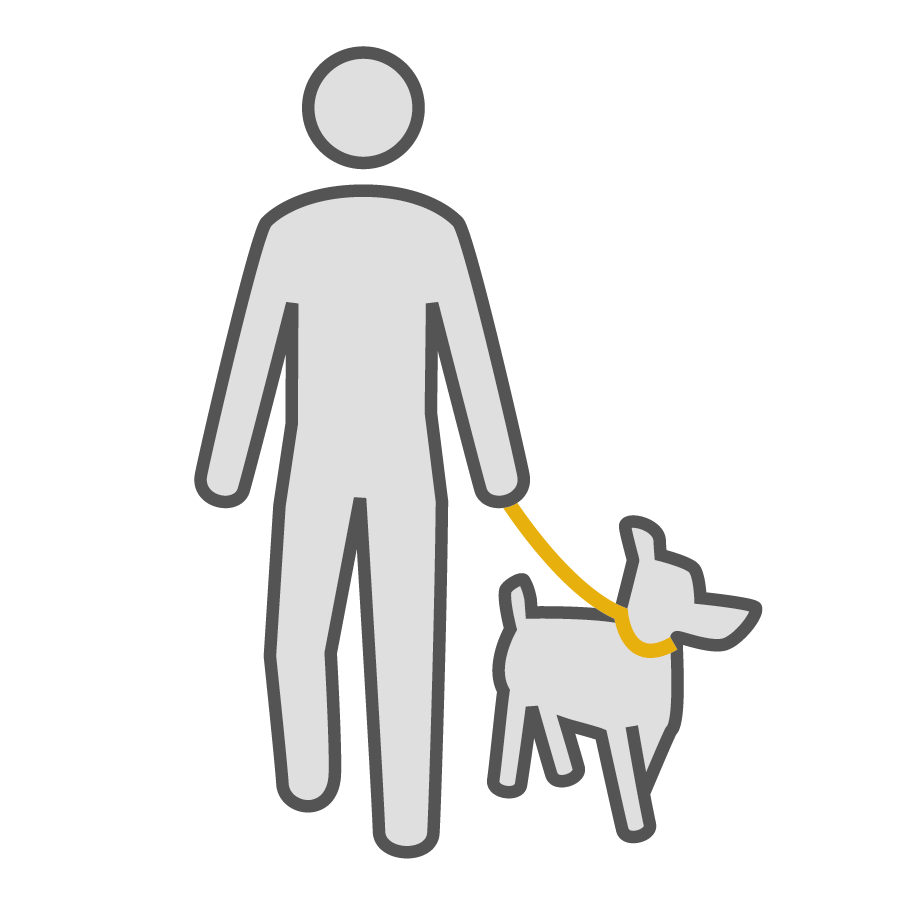
A host is any organism on or in which bacteria or viruses live for nourishment or protection. A person or animal—cats, dogs, birds, any living thing—can be a host.
When a virus has moved into the body of a person or animal (the host), it multiplies and spreads easily and can make him sick. Viruses cause minor illnesses, such as colds, but they are also responsible for more serious diseases like measles.
Bacteria and viruses (germs) can be spread in many ways. Three main types of transmission occur:
Direct contact
Indirect contact
Airborne
Direct Contact

Direct contact means, basically, person-to-person contact. This includes shaking hands, high-fives, fist bumps, kissing and hugging.
If someone is host to germs, his body’s fluids contain germs. When he sneezes or coughs, droplets of fluid will get on his hands.
If he then directly touches another person, such as shaking his hand, he can transmit the germs to that other person.
Indirect Contact
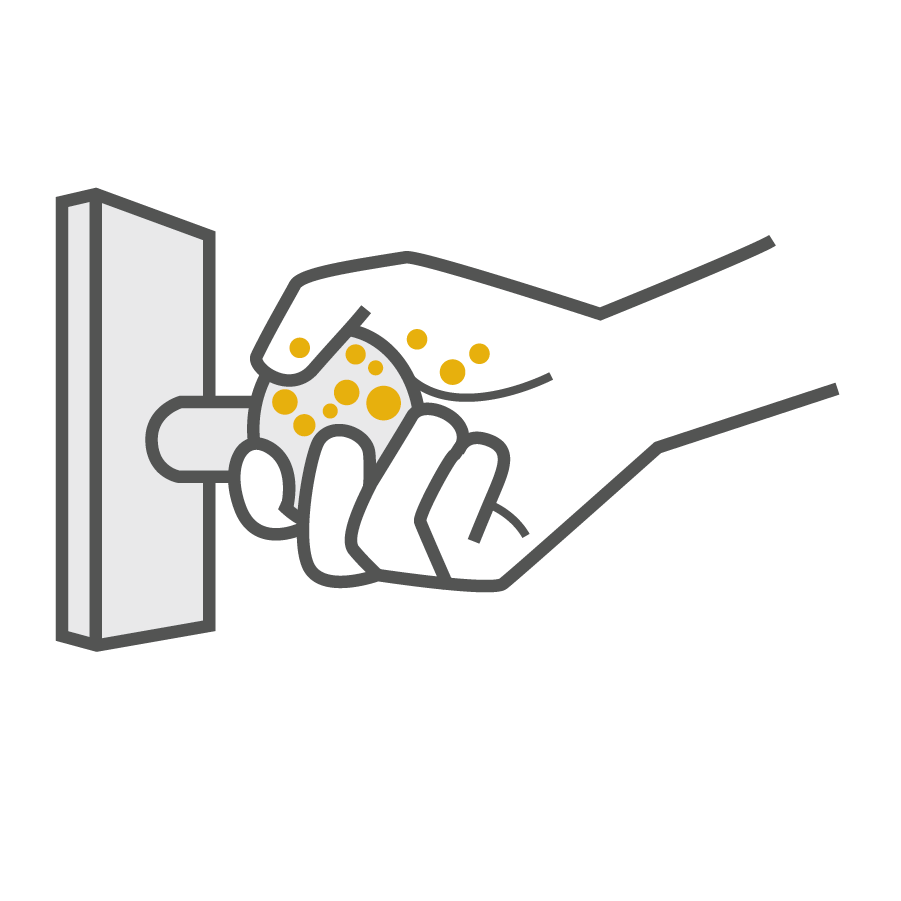
Indirect contact occurs when someone spreads germs onto an object, another person touches that object, and the germs spread to that person.
Germs can reside on:
Doorknobs
Stair rails
Countertops
Faucets
Phones
Keys
Credit cards
Tablets
Remote controls
Keyboards
Pens
Any other commonly touched objects and surfaces
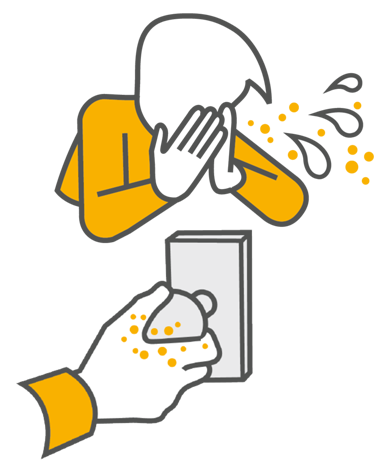
So the host sneezes or coughs and then touches the doorknob, leaving germs on it.

Another person touches the same doorknob and picks up the germs.

If the person then touches his eyes, nose, mouth or ears before washing his hands thoroughly, the germs can enter his body.

Another common form of indirect contact occurs when people share items. Droplets of body fluid are present in anything that comes in contact with a person’s mouth.
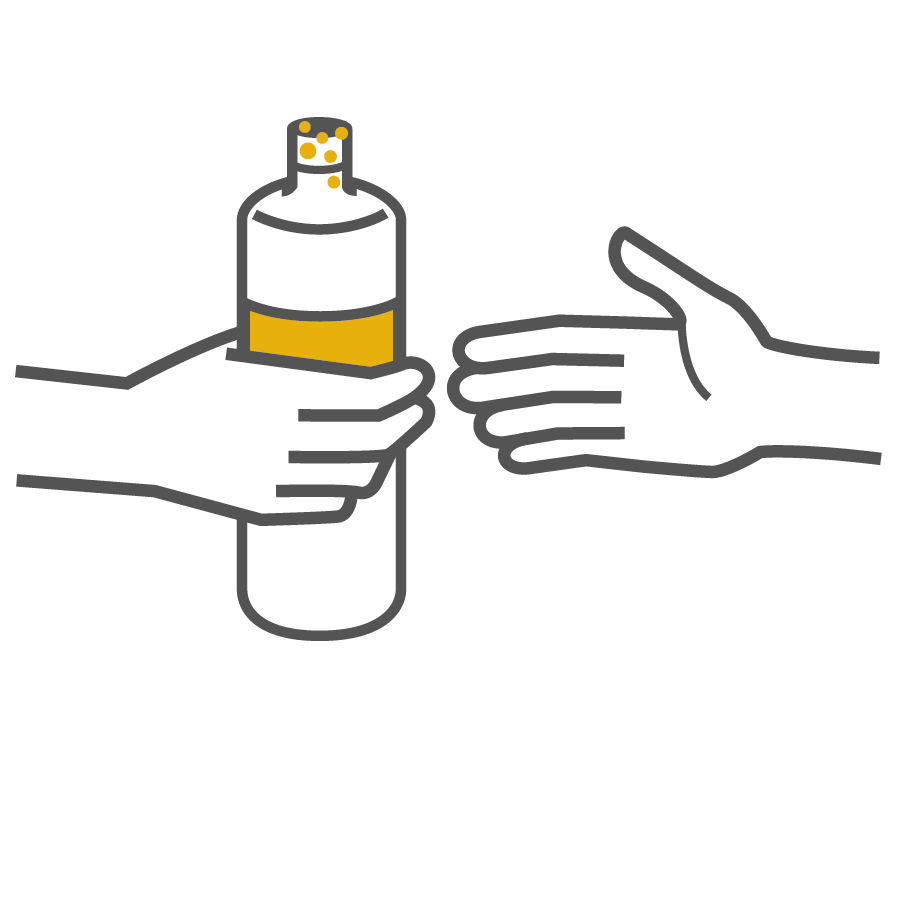
So indirect contact occurs when people share utensils, water bottles, drinks, food, etc., and germs can be transmitted from one person to the other.
Airborne
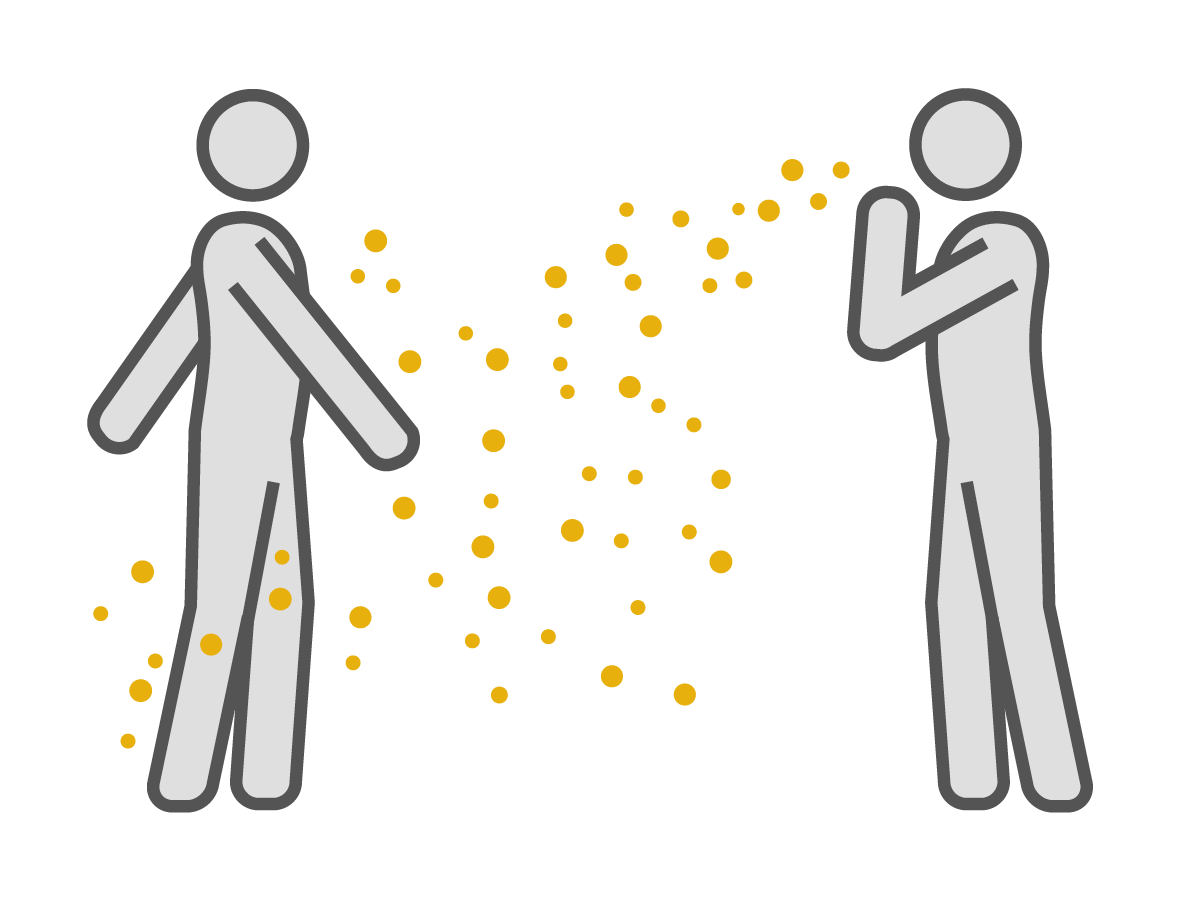
Germs can also travel through the air from one person to another.
For instance, germs are released into the air when a host coughs or sneezes. The tiny droplets from a cough or sneeze can travel and spread germs when they land on surfaces or on another person.
People constantly shed skin and hair. These may also contain germs that can then travel through the air and infect others.
The important thing to know is that a person can be a host without even knowing. For example, a person may have a virus in his body yet have no symptoms of illness. He may, in fact, never get sick. But someone else in contact with him can still pick up the virus and become ill.
How Bacteria and Viruses Spread
Germs
Germs are bacteria or viruses that can cause infection or illness.
Host
The germs live in the cells of an individual or animal (host).
Exit
The germs leave the host through the eyes, nose, mouth, ears, open wounds, urinary tract, etc.
(person to person)
(person to object, or shared food or drink,
to person)
Transmission
The germs are transmitted by direct or indirect contact or through the air.
(through the air)
Transmission
The germs are transmitted by direct or indirect contact or through the air.
Entry
The germs infect a new host through the eyes, nose, mouth, ears, open wounds, etc.
New Host
The new host may become sick or not, but he can now transmit the germs to others.

Because germs are easy to transmit from one person to another, it is important to isolate anyone who is ill or may be ill with a contagious disease to protect others—family, friends, associates and the rest of society. Isolation means separating a person so that no germs are passed on to others.
If someone in your household is ill with a contagious disease (or you suspect the person may be contagious based on their symptoms), do the following immediately:
- Keep your entire household at home.
- Do not go to work or to school. Work or study from home.
- Contact your medical doctor for advice. Call ahead before going to a clinic or doctor’s office or hospital. It may be advisable to stay home and protect others from being infected, unless the illness is severe.
- Note: If a person has severe symptoms, such as shortness of breath, high fever, etc., seek immediate medical attention.
- Keep the person who is ill isolated from the rest of the household. Ensure elderly people and those susceptible to illness are kept well away from the ill person.
- Do not have the ill person in contact with pets or other animals.
- If an ill individual pets his cat or dog, for instance, he may leave germs on the pet’s fur that can be transmitted to others who pet the animal later.
- Have the ill person stay in a separate room until fully recovered and no longer contagious.
- Find out from your medical doctor when it is safe for the person to return to work or interact with others.
- Be careful to thoroughly follow all hygiene and sanitizing recommendations given in this booklet.
Cleaning and Sanitizing

Frequent cleaning and sanitizing are needed when someone in your household is ill with a contagious disease.
Cleaning refers to the removal of dirt and impurities from surfaces. Cleaning alone does not remove all germs.
Sanitizing refers to using chemicals to kill germs on surfaces. Sanitizing doesn’t necessarily clean surfaces, but by killing germs on a surface after cleaning, it can further lower the risk of spreading infection.
Products to Use for Sanitizing
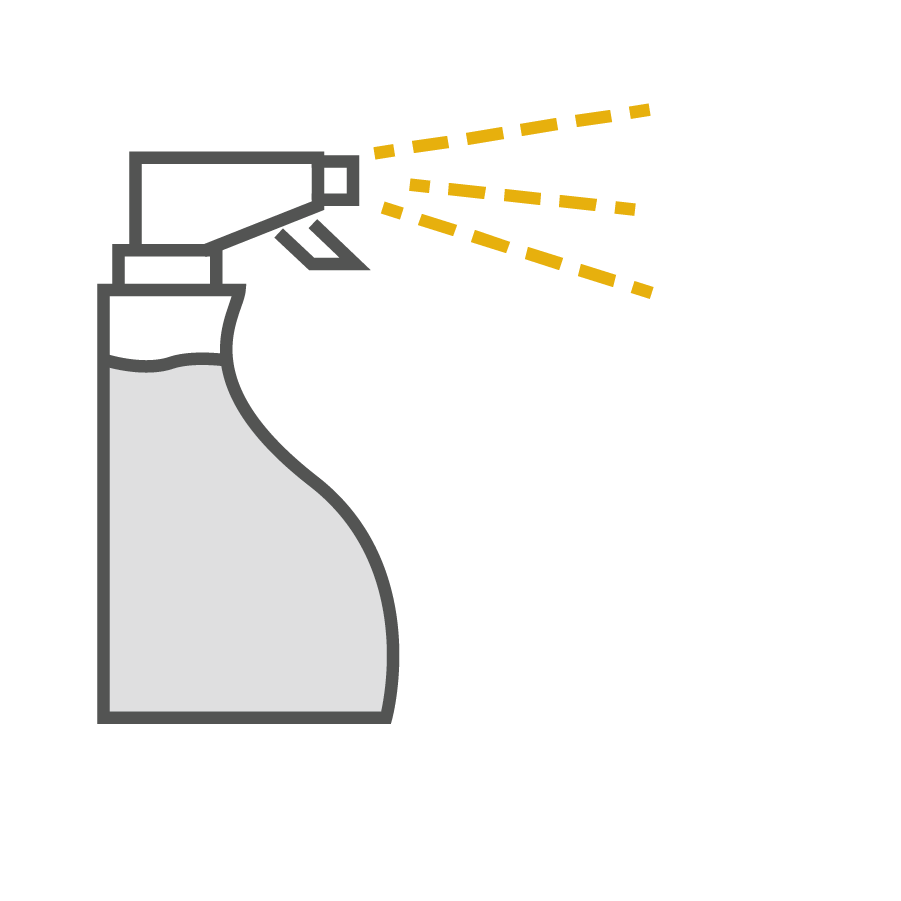
When a person in your household is ill and is isolated, increase how often you clean and sanitize, particularly frequently touched surfaces, such as tables, doorknobs, light switches, handles, desks, phones, toilets, faucets and sinks.
- To sanitize a surface, use a standard disinfectant, such as hydrogen peroxide. Use any concentration between 3% (common household grade) and 7.9%.
- Another effective disinfectant is grain alcohol or rubbing alcohol. Use alcohol-based products with at least 70% alcohol. Do not use products with an alcohol content above 90%, as these will evaporate before killing viruses.
- You can also use a bleach-and-water solution of 1⁄12 cup (4 teaspoons) of bleach per 1 quart of cool water (20 ml bleach per 1 liter of cool water). When preparing a bleach solution, always check the bottle’s expiration date to ensure the bleach has not expired.
- Note: Never mix bleach with any other cleaning solution or liquid except water.
- Always read and follow the manufacturer’s instructions for how to apply the disinfecting product, including the length of time it should be left on a surface.
Isolated Person’s Room


If you must be in contact with the ill person, due to the person’s age or infirmity:
- Always put on a face mask and disposable gloves before entering the ill person’s room.
- Ensure the ill person also puts on a face mask before you enter the room.
- Remove and discard your mask and gloves in a lined trash can as you leave the room.
- Wash your hands thoroughly.
Bathroom
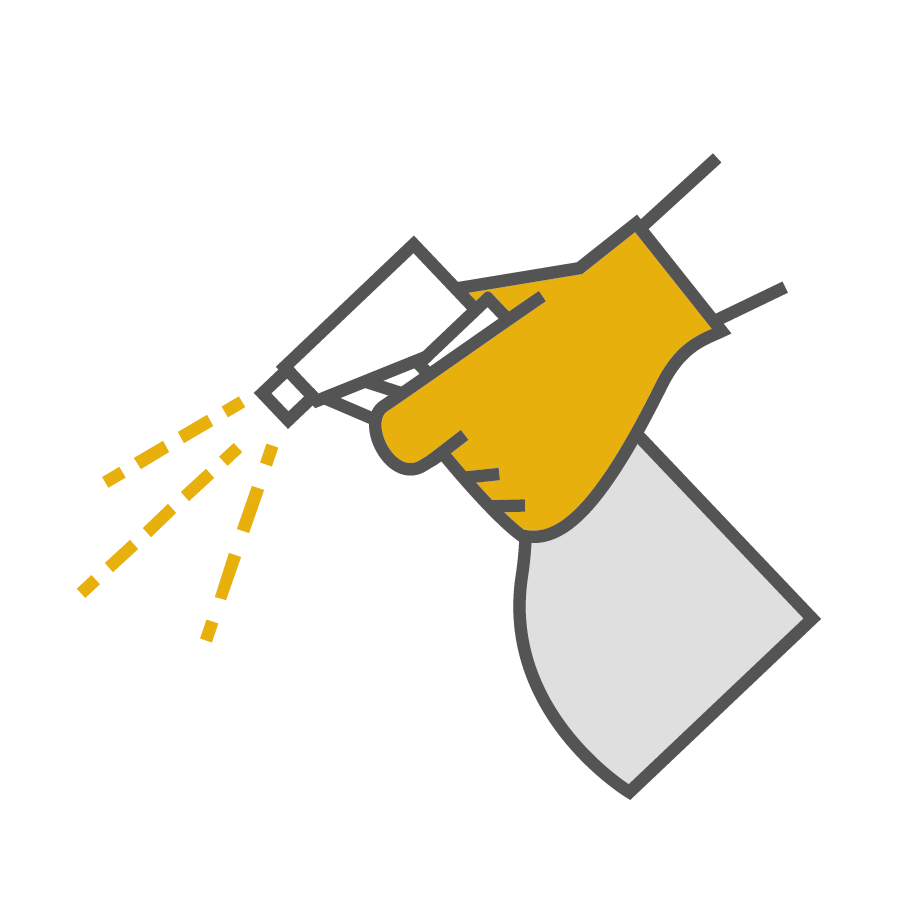
An ill person who is isolated should use a different bathroom than others in the household.
If a separate bathroom is not available:
- Fully sanitize the bathroom after each use, following the guidelines on cleaning and sanitizing given in this booklet.
- Use disposable gloves (and ideally a face mask, if you have one) when cleaning and sanitizing the bathroom.
- When done sanitizing, remove and discard the gloves.
- Wash your hands thoroughly.
Dishes and Utensils

The person in isolation should use disposable dishes and utensils.
If disposable dishes and utensils are not available, wash and sanitize the dishes in a dishwasher that has a final rinse temperature of at least 150° F (65° C).
If no dishwasher is available, fully sanitize the dishes by doing the following:
- Use disposable gloves (and a mask, if you have one) to take used dishes directly to an empty sink. Keep the gloves on.
- Thoroughly wash and rinse dishes, glassware and utensils.
- Remove and discard the gloves. Wash your hands thoroughly. Put on a new pair of gloves.
- Soak the clean dishes for at least two minutes in a solution of 2 teaspoons of bleach per 1 gallon of cool water (10 ml bleach per 4 liters of cool water).
- Drain and air-dry them.
- Remove and discard the gloves.
- Wash your hands thoroughly.
Garbage
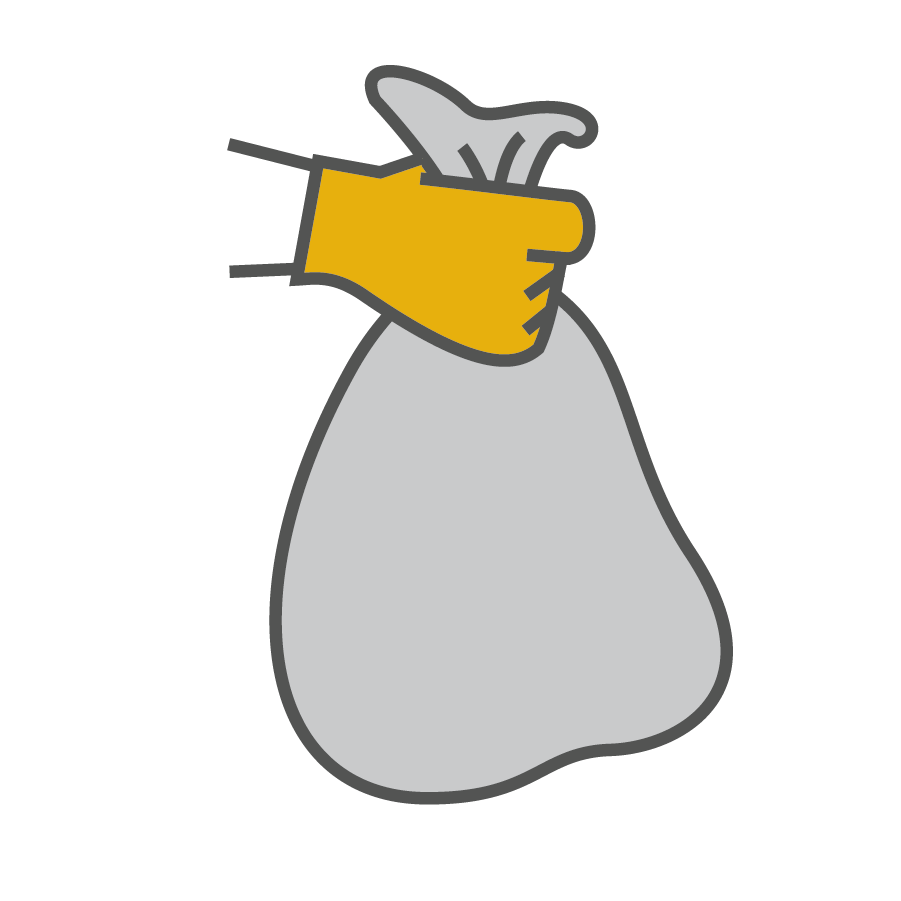
- Dedicate a lined trash can for the ill person’s room.
- Use disposable gloves (and a mask, if you have one) when removing garbage bags and handling and disposing of an ill person’s trash.
- Place the fully sealed garbage bag in an outdoor waste receptacle.
- Remove and discard the gloves.
- Wash your hands thoroughly.
Laundry
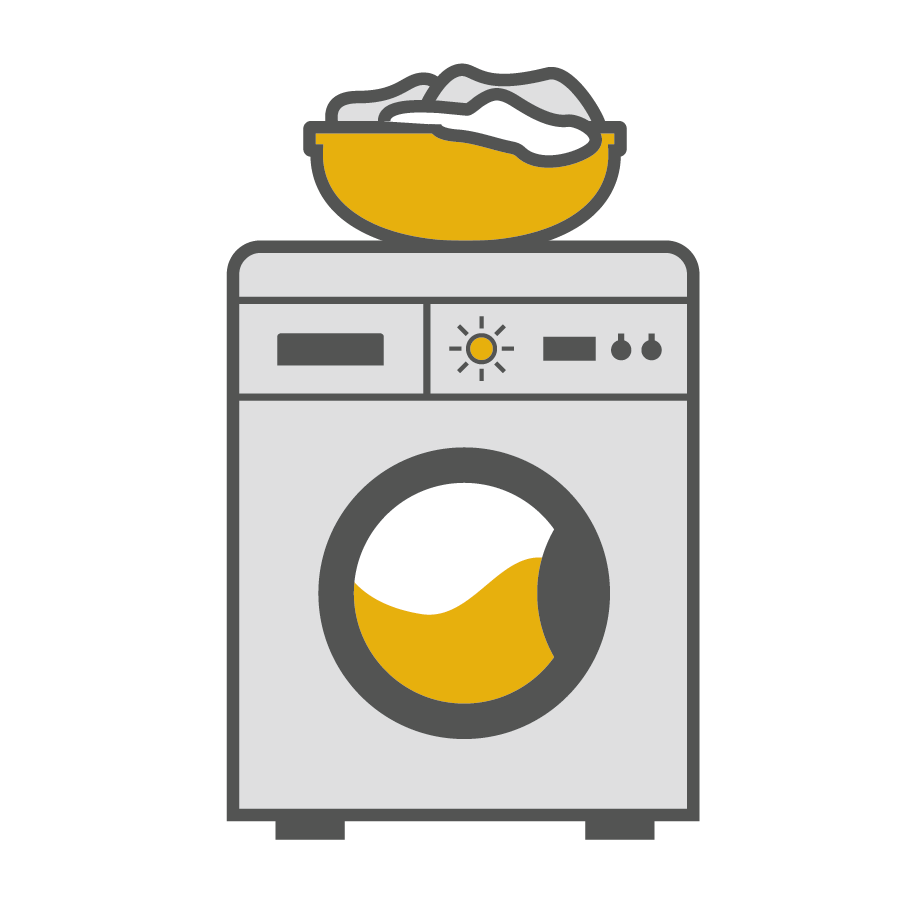
Always wear disposable gloves (and a mask, if you have one) when handling a contagious person’s dirty laundry.
- Keep the ill person’s laundry separate from the rest of the household. Provide a disposable bag or a liner that can be washed with the rest of the ill person’s laundry.
- Caution: Do not shake the laundry so you don’t spread germs through the air!
- Wash clothes per the washing machine instructions, using the hottest possible appropriate setting. The higher the temperature, the more likely you are to kill viruses and bacteria.
- Caution: Do not overfill the washing machine with clothes or linens. Leave enough room for the water to be able to adequately wash away dirt and germs.
- When you are done putting the ill person’s laundry in the machine, remove and discard the gloves.
- Wash your hands thoroughly.
- Start the wash cycle. Once the water is running in the washing machine, add ½ to 1 cup (120 to 240 ml) of hydrogen peroxide to the washing machine.
- Caution: Do not pour hydrogen peroxide directly on anything that isn’t white, as it will bleach it.
- Dry the laundry completely at the hottest recommended setting.
- Sanitize the washing machine per the manufacturer’s instructions.
- Before putting another liner in, clean and disinfect the ill person’s clothes hamper following the sanitizing recommendations given in this booklet.
By following the guidelines and precautions in this booklet, you can help prevent the spread of illness.
airborne: carried in or moved through the air.
bacteria: very small organisms consisting of one cell that can be seen only through a microscope. Bacteria exist almost everywhere, including in and on the human body. Some are helpful, such as bacteria that aid in digestion. Others can have harmful effects, such as those causing tooth decay or diseases.
bleach: a strong chemical used for cleaning that kills harmful bacteria and germs.
body’s fluids: the liquids that come from inside a body, such as saliva, urine, mucus and blood.
contagious: able to be passed from one person to another, especially through physical contact or through the air.
disinfectant: a chemical liquid that kills bacteria and other microscopic organisms.
droplet: a very small drop of liquid produced when someone coughs, sneezes, talks, etc., containing substances from saliva and mucus and possibly carrying infectious agents, such as viruses and bacteria.
grade: of or pertaining to a degree or rating in a scale classified according to quality, rank, worth, intensity, etc.
grain alcohol: a type of alcohol that is made from fermented grain. It is a colorless liquid with a sharp smell that has many uses, including killing bacteria and some viruses.
host: an organism in or on which another organism lives.
hydrogen peroxide: a watery chemical compound used to kill disease-causing microscopic organisms and also as a bleach to lighten or remove the color from something.
inanimate: not having the qualities associated with active, living organisms; not alive.
infection: a disease or medical condition caused by a virus, bacteria, etc.
infirmity: a medical condition that causes a lack of strength or energy.
isolate: completely separate someone with a disease from other people so that the disease will not spread.
isolation: the action or result of completely separating someone with a disease from other people so that the disease will not spread.
measles: a highly contagious disease, usually occurring in childhood, with symptoms including a high temperature and a bright red rash of small spots that spread to cover the body.
precaution: something that is done to protect people from possible illness, harm or trouble.
sanitizing: the act of making something sanitary, clean and free from microscopic organisms that cause disease.
solution: a mixture of two or more substances, such as a solid dissolved in a liquid.
strep throat: an infection of the throat caused by a type of bacteria called streptococcus. Strep throat causes a sore throat, fever and weakness.
susceptible: likely to be influenced or affected by a particular thing.
symptom: a change in the body indicating that someone has an illness.
transmission: the passing of a virus, illness or disease from one person to another person.
transmit: cause a virus, illness or disease to be given to people or be passed from one person to another person.
urinary tract: the system of organs and parts in the body that produce, store and discharge urine.
virus: an infectious source of disease in the body that is too small to be seen through a regular microscope. Viruses can infect human beings with the common cold or more serious diseases.
Download and print these signs for your home and/or essential business.
An effective way to prevent the spread of illness and infection is to practice social distancing.
For the health and safety of all, please refrain from personal contact with others.
Washing your hands is one of the most effective ways to prevent the spread of germs.
Hand sanitizer is used in addition to hand washing or in a location or situation where soap and water are not immediately available.








